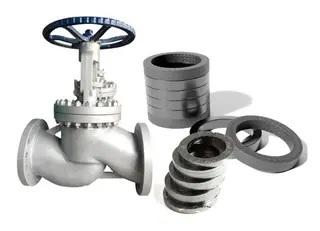-
Новости
- ИССЛЕДОВАТЬ
-
Страницы
-
Группы
-
Мероприятия
-
Reels
-
Статьи пользователей
-
Offers
-
Jobs
-
Форумы
Compression Packing in Industrial Applications: Balancing Sealing and Low Friction

Compression Packing in Industrial Applications: Balancing Sealing and Low Friction
In industrial systems—whether transporting natural gas, water, caustic alkalis, or high-temperature steam—compression packing plays a critical role in preventing leakage from high-pressure to low-pressure zones. It is a cost-effective, high-performance sealing method. However, during operation, compression packing generates friction, which can affect valve performance and lead to operational issues. Effectively managing this friction is essential for optimizing equipment operation, reducing maintenance costs, and improving production efficiency.
The Importance of Low-Friction Packing
For pneumatic and electric operated control valves (AOV and MOV), low-friction packing is key to achieving precise, efficient, and stable actuation. Friction on dynamic surfaces depends primarily on the type of sealing material, contact surface area, and compression load. While system variables like pressure, temperature, and lubrication also affect friction, they are often difficult to modify. Optimizing friction starts with material selection, packing configuration, and proper installation, achieving low-friction operation without compromising sealing performance.
Different applications have varying leakage tolerances. In some cases, graphite ensures optimal sealing, while PTFE-based materials may better reduce friction. Cost-effectiveness and operational requirements must be considered, as there is no universal sealing solution—each scenario requires a tailored approach validated through testing.
The Sealing Principle of Compression Packing
Compression packing seals by axial compression, which forces the packing to press radially against the dynamic sealing surface. Leakage depends on medium properties, system pressure, valve design, installation method, shaft alignment, and temperature. Friction and sealing are interrelated: minimizing friction alone compromises sealing, while maximizing sealing may increase friction excessively.
Operators can adjust leakage and friction by controlling the number and type of packing rings, installation method, and axial load. Three primary strategies help reduce friction while maintaining effective sealing:
Strategies to Reduce Friction in Compression Packing
1. Reducing Load on the Stuffing Box
Friction is proportional to the packing’s contact area and compression. The first two rings in a packing set contribute most to sealing, while additional rings increase friction without significantly improving performance. Reducing ring count lowers friction, but may affect spacing and sealing. Carbon or steel bushings can maintain packing height without increasing friction. The optimal number of rings should be determined based on specific system requirements.
2. Selecting Low-Friction Packing Materials
The coefficient of friction (COF) of the packing material directly influences operational friction. Common low-friction materials include:
-
PTFE: Highly lubricated, but limited to ~260°C and prone to creep.
-
Graphite: Withstands up to 454°C in oxidizing atmospheres and 649°C in steam.
These materials can be used alone or combined with fibers and lubricants to optimize properties. Molded graphite rings with beveled surfaces or PTFE-coated braided carbon/graphite reduce compression loads while maintaining effective sealing. This soft-material approach balances shear friction and structural integrity, minimizing friction on the valve stem.
3. Optimizing Installation and Configuration
Proper installation ensures uniform contact between packing and sealing surfaces, reducing unnecessary friction. Key steps include:
-
Following manufacturer instructions for ring placement.
-
Controlling axial compression to avoid overloading.
-
Ensuring smooth, polished valve stems (recommended 32 μin AARH finish) to minimize wear and uneven loading.
Poor installation, stem runout, or interference from gland followers can increase friction and reduce packing efficiency.
Testing and Verification
Currently, no universal standard exists for measuring friction in compression packing. Manufacturers develop internal tests to compare friction performance, but real-world valve friction depends on dynamic interactions of lubrication, surface finish, temperature, and operating cycles. Therefore, strict application-specific testing is essential to ensure optimal sealing and low-friction performance.
Conclusion
Compression packing remains a cost-effective, high-performance sealing solution in industrial applications. While friction is inevitable, it can be minimized through careful material selection, packing configuration, and proper installation. Each application requires tailored solutions and rigorous verification to balance sealing effectiveness with low friction, ensuring stable, long-term valve operation.
By combining innovation with proven sealing strategies, operators can improve production efficiency, reduce maintenance costs, and extend equipment service life. The art of compression packing lies in finding the optimal balance between sealing and friction—an ongoing pursuit in industrial valve technology.
It's important to know about Google SEO to help your website rank higher in search results.
- Fashion
- Art
- Causes
- Crafts
- Dance
- Drinks
- Film
- Fitness
- Food
- Игры
- Gardening
- Health
- Главная
- Literature
- Music
- Networking
- Другое
- Party
- Religion
- Shopping
- Sports
- Theater
- Wellness
